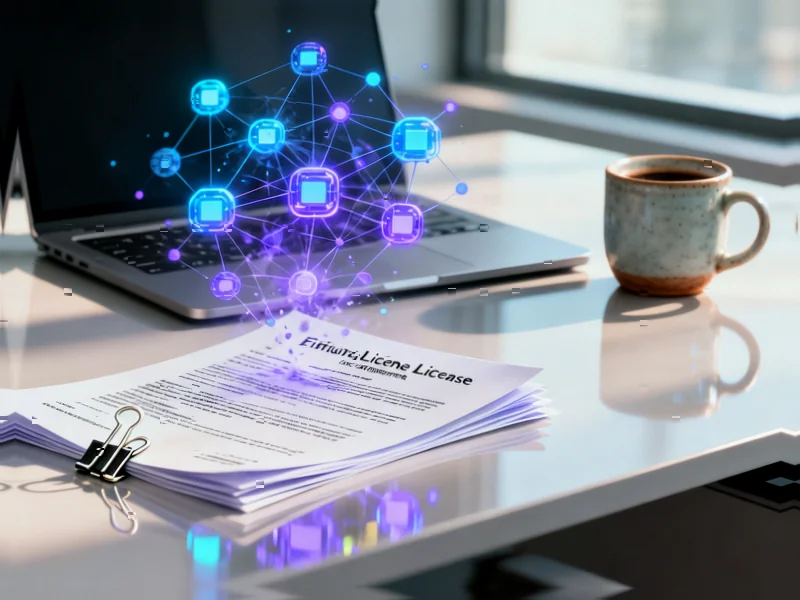According to ZDNet, a McKinsey analysis predicts that per-seat software licenses may soon become obsolete as AI agents begin handling software transactions, potentially reducing seat counts by up to 70%. The consulting firm’s research reveals that 63% of vendors believe AI will fundamentally change their business models within three to five years, with 40% expecting AI to unlock more than 20% revenue growth beyond current trajectories. Industry experts cited in the report anticipate a shift to consumption-based pricing models based on usage, tokens, output, or outcomes, marking what McKinsey describes as the beginning of the “post-SaaS era.” This transition represents what the analysis calls “a foundational shift redefining what software is, who builds it, who uses it, and how companies are organized and operate.” The implications of this shift extend far beyond simple pricing changes.
Table of Contents
From User-Centric to Agent-Centric Software
The traditional software licensing model has evolved through several distinct eras, from perpetual on-premise licenses to the subscription-based SaaS revolution that dominated the past two decades. What makes the current shift fundamentally different is that we’re moving from software designed for human interaction to systems built for AI-to-AI communication. This isn’t merely a pricing change—it’s a complete rearchitecture of how software functions at its core. When agents can autonomously select, configure, and utilize software on behalf of human users, the very definition of “user” changes from individual employees to automated systems that may serve multiple human stakeholders simultaneously.
The Measurement Challenge in Outcome-Based Models
While outcome-based pricing sounds appealing in theory, it introduces significant measurement and accountability challenges that the industry hasn’t fully solved. How do you objectively define and measure “success” when outcomes can be influenced by multiple variables beyond the software itself? A sales automation tool might promise increased conversion rates, but what happens when market conditions change or sales team composition shifts? The risk of vendors “repackage[ing] suite pricing as outcome bundles” that customers can’t properly audit represents a genuine concern. Companies will need sophisticated monitoring systems to verify they’re getting the value they’re paying for, creating a new layer of complexity in vendor management and contract compliance.
The Infrastructure Isn’t There Yet
Despite the optimistic projections, the technical infrastructure required for widespread agent-to-agent software interaction remains immature. Most enterprise systems weren’t designed for autonomous AI agents to navigate them, and the security implications of agents making decisions across organizational boundaries are substantial. As the software development process adapts to this new paradigm, we’ll likely see a transitional period where human-supervised agents become the norm before full autonomy becomes practical. The gap between the vision of autonomous AI agents and today’s reality means companies should prepare for hybrid models where traditional licensing coexists with emerging consumption-based approaches for several years.
Vendor Adaptation: Winners and Losers
The shift to agent-centric software will create clear winners and losers across the vendor landscape. Companies with strong AI capabilities and flexible pricing models will thrive, while those locked into traditional per-seat architectures may struggle. The McKinsey analysis correctly identifies that vendors expecting significant revenue growth from AI will need to fundamentally rethink their value proposition. However, the transition carries substantial risk—vendors who move too quickly may alienate existing customers, while those who move too slowly risk being disrupted by more agile competitors. The most successful vendors will likely be those who can maintain their current revenue streams while simultaneously building the infrastructure for the agent-driven future.
What Companies Should Do Now
Rather than rushing to adopt outcome-based pricing models, organizations should focus on understanding their own software usage patterns and building internal AI capabilities. The advice to “understand your own usage patterns before you invest” becomes critically important in this transition. Companies should pilot agent-based approaches in controlled environments, develop metrics for measuring AI-driven outcomes, and carefully evaluate vendor claims about performance measurement capabilities. The organizations that succeed in this new landscape will be those that approach the transition strategically rather than reactively, recognizing that the shift from SaaS to agent-driven software represents one of the most fundamental changes in enterprise technology since the cloud revolution.



